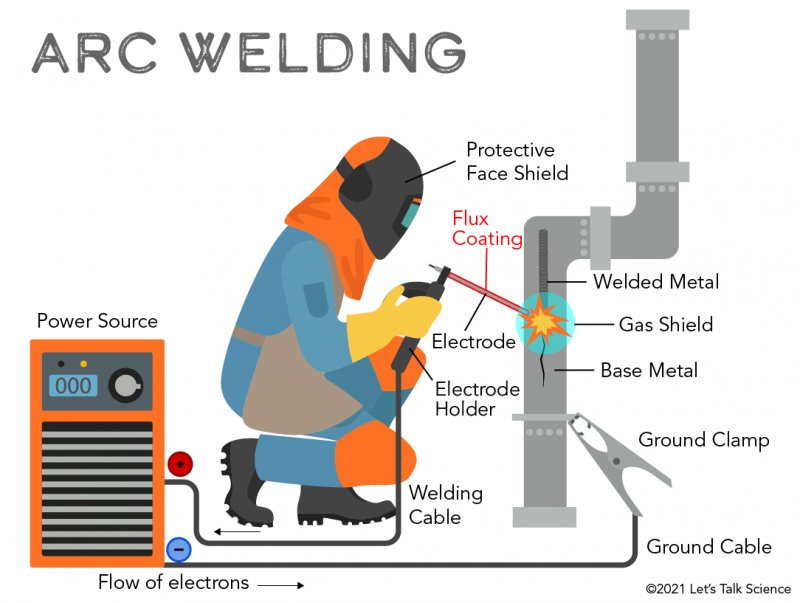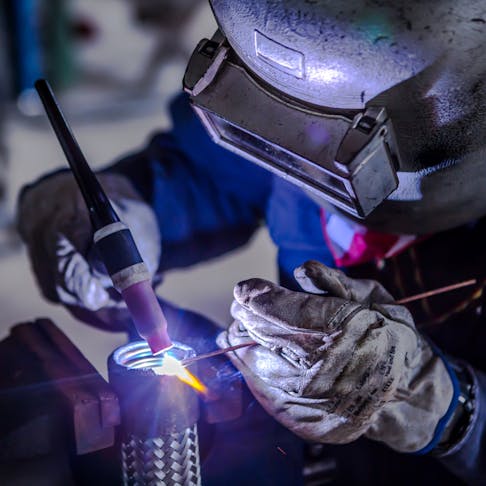Understanding Welding WPS: Comprehensive Guide for Welders
Understanding Welding WPS: Comprehensive Guide for Welders
Blog Article
The Ultimate Guide to Welding WPS Procedures: An Extensive Summary for Welders
In the intricate world of welding, Welding Procedure Specifications (WPS) work as the foundation of making sure quality, uniformity, and security in welding operations. Comprehending the subtleties of producing, applying, and monitoring WPS treatments is essential for welders looking to boost their craft and satisfy industry requirements. As we dig into the different components of a WPS and explore the complexities of qualification and accreditation, we will certainly reveal the crucial duty these procedures play in the realm of welding. Let's start a trip to decipher the intricacies and significance of WPS procedures in welding methods.
Importance of WPS Procedures
Comprehending the importance of Welding Treatment Specs (WPS) treatments is vital for making sure the quality and integrity of welded structures. WPS procedures act as a roadmap for welders, describing the necessary steps, parameters, and materials needed to achieve a sound weld. By adhering to WPS standards, welders can guarantee uniformity in their job, causing structurally sound and dependable welds.
Among the key reasons that WPS procedures are important is their function in keeping weld high quality and stability. Adhering to the defined welding specifications and techniques outlined in the WPS aids avoid flaws such as porosity, fracturing, or insufficient blend, which can compromise the toughness and sturdiness of the weld. Furthermore, WPS procedures are critical for making sure compliance with market requirements and codes. By complying with well established WPS standards, welders can demonstrate that their work meets the necessary requirements for safety and quality, offering assurance to clients, inspectors, and governing bodies. Basically, the value of WPS procedures can not be overemphasized, as they are essential to achieving consistent, top notch welds that meet industry requirements and specs.

Elements of a WPS
A Welding Treatment Specification (WPS) generally makes up important components that information the particular requirements for executing a weld, ensuring uniformity and top quality in the welding procedure. The essential components of a WPS consist of important variables such as base metals, filler metals, preheat and interpass temperatures, welding processes, shielding gases, welding positions, and post-weld warmth therapy requirements.
Base metals describe the materials being signed up with, while filler metals are made use of to fill up the space in between the base steels throughout welding. Preheat and interpass temperature levels are important for regulating the warm input and protecting against concerns like breaking or distortion. The welding procedure lays out the details strategy to be utilized, whether it's gas metal arc welding (GMAW), protected steel arc welding (SMAW), or an additional approach. Securing gases shield the weld swimming pool from atmospheric contamination. Welding settings specify the positionings in which welding can be executed. Post-weld heat therapy might be needed to relieve anxieties and improve the weld's residential or commercial properties. A detailed understanding of these elements is vital for developing a extensive and efficient WPS.

Certification and Qualification
Having actually developed the vital parts of a Welding Treatment Requirements (WPS), the emphasis now changes in the direction of the important facets of credentials and accreditation in welding methods.

Qualification, on the various other hand, is the official read here recognition of a welder's certifications by a relevant qualification body or company. Welding certifications are commonly based on the specific welding procedures, products, and positions a welder is qualified to deal with. Holding a valid welding accreditation demonstrates that a welder satisfies market standards and is qualified to carry out welding jobs to the called for requirements.
Creating a WPS
To develop a Welding Treatment Spec (WPS) that satisfies sector requirements, cautious consideration of welding processes, materials, and functional parameters is important (welding WPS). The first step in creating a WPS is to recognize the welding procedure to be utilized, such as gas metal arc welding (GMAW) or shielded steel arc welding (SMAW) As soon as the welding process is determined, the following vital facet is choosing the suitable products, thinking about variables like base metal type, density, and joint style. Operational criteria such as welding existing, voltage, traveling rate, and protecting gas make-up need to also be carefully defined in the WPS.

Carrying Out and Checking WPS
Upon completing the thorough Welding Treatment Specification (WPS) that diligently details welding procedures, products, functional specifications, and top quality guarantee procedures, the focus changes to efficiently carrying out and keeping track of the well established treatments. Execution involves making sure that all welders entailed in the task are acquainted with the WPS and follow important link it carefully throughout the welding process. Reliable execution and surveillance of the WPS are essential for guaranteeing the honesty, stamina, and security of the bonded joints, inevitably contributing to the total success of the welding project.
Conclusion
To conclude, understanding and complying with Welding Procedure Specs (WPS) is essential for welders to make sure high quality, uniformity, and safety and security in their work. By knowing the elements of a WPS, acquiring correct qualifications and accreditations, creating detailed treatments, and executing and checking them properly, welders can boost their abilities and proficiency in welding techniques. Complying with WPS treatments is necessary for creating high-quality welds and meeting industry requirements.
In the intricate globe of welding, Welding Procedure Specs (WPS) serve as the foundation of ensuring quality, consistency, and security in welding operations. The welding process lays out the certain method to be used, whether it's gas steel arc welding (GMAW), shielded metal arc welding (SMAW), or an additional approach.To establish a Welding Procedure Spec (WPS) that fulfills sector standards, cautious consideration of welding procedures, products, and operational criteria is necessary. The first action in developing a WPS is to recognize the welding procedure to be made use of, such as gas metal arc welding (GMAW) or protected steel arc welding (SMAW)Upon settling the extensive Welding Treatment Specification more (WPS) that diligently information welding procedures, products, operational specifications, and high quality guarantee procedures, the emphasis shifts to properly executing and monitoring the recognized procedures.
Report this page